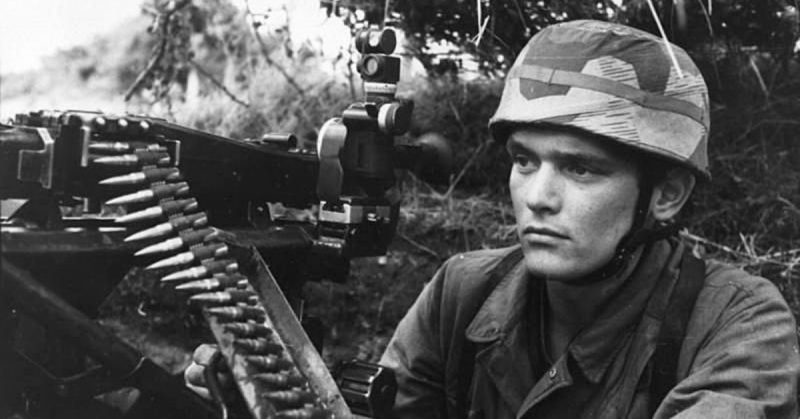When US soldiers first saw the MG 42, they made fun of the machine gun’s stamped steel parts. But the MG 42 was fully loaded with surprises. Those using it could rapidly cut down and suppress enemy forces with outstanding tenacity.
After a few encounters with the German machine gun, the US Army made an attempt at producing the T24, which was nearly an exact copy of the MG 42. Unfortunately, the T24 was an embarrassing disappointment, and it was never used.
But with the MG 42’s impressive performance, the United States would not be the only country to try and copy the German machine gun.
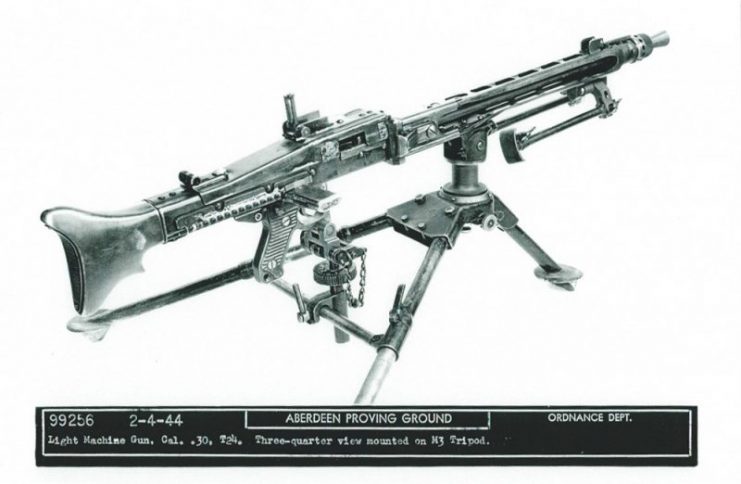
The MG 42 was a spectacular general-purpose machine gun (GPMG) produced and used by Germany during World War II.
It made its entrance as a replacement for the extraordinary MG 34 which was already the trademark GPMG of the Wehrmacht.
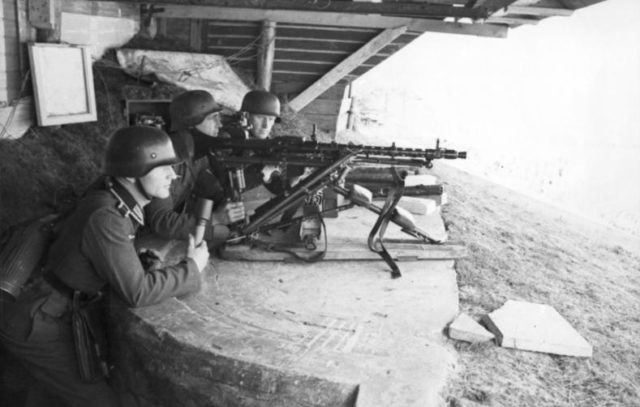
The MG 34 had a highly innovative design. It was built on the basis of Nazi Germany’s new “one gun fits all” philosophy. It introduced a completely new side to automatic firepower. The weapon won the hearts of personnel in the German military with its impressive combination of versatility, reliability, and dominance in both attacking and defensive positions.
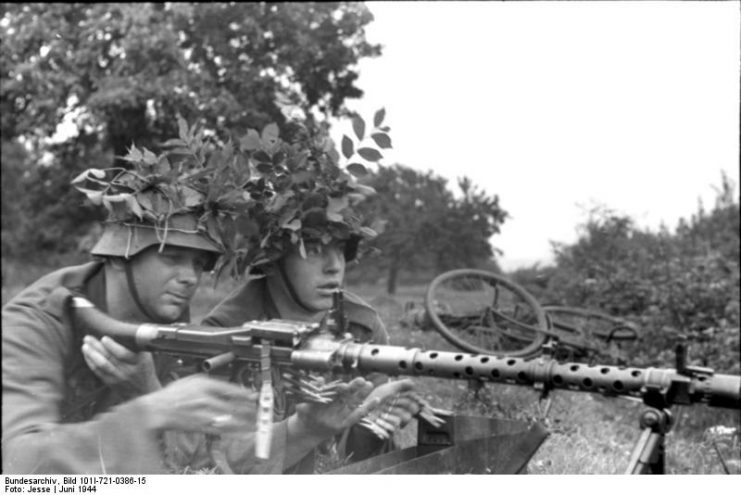
However, the MG 34 was plagued by its high production cost and slow production rates which resulted from its precision engineering and the use of relatively scarce, high-grade metal alloys.
The MG 34 had set a high bar. For Nazi Germany to maintain a high chance of success in the war, it needed a new variety of GPMGs which had the qualities of the MG 34 but with lower costs.
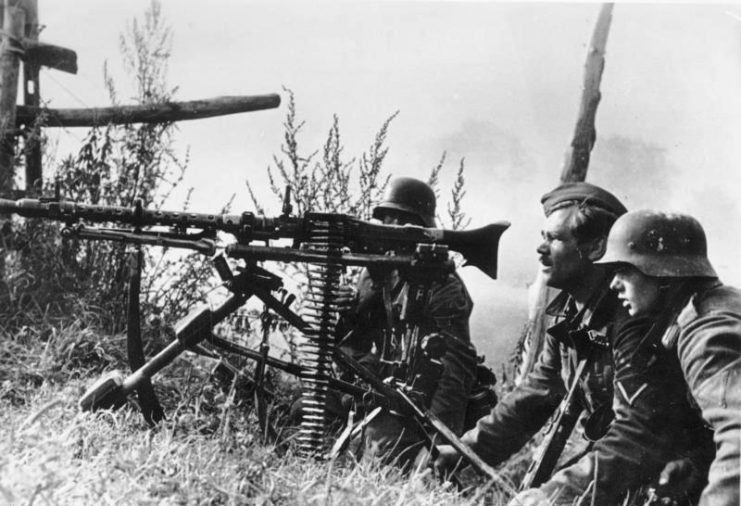
These requirements gave rise to the MG 42.
Just like its predecessor, the MG 42 employed a 7.92 x 57 mm Mauser cartridge, along with air-cooling and recoil operation systems. But this GPMG was special because it did more than match the high performance of the MG 34.
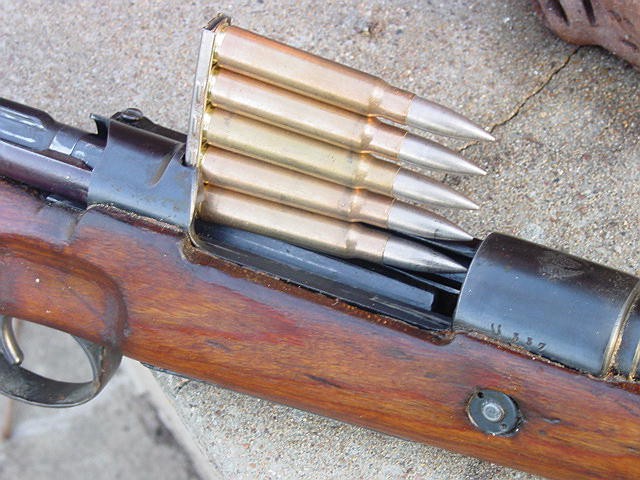
It was cheaper to build, affording a 24% reduction in production costs. Its production rate of 75 man hours was a stunning 50 percent faster to build than that of its predecessor. It was also more tolerant of mud and dirt than the rather temperamental MG 34.
Indeed, the MG 42 was a worthy successor.
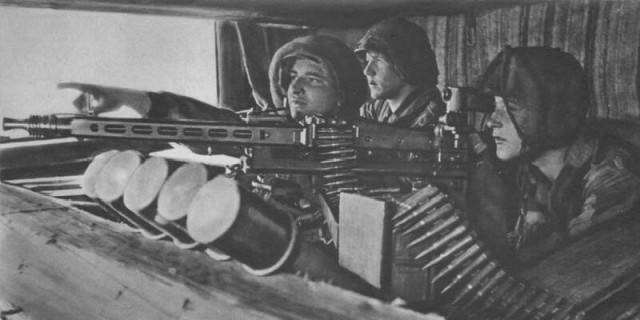
During the war, the manufacturing of the MG 42 was handled by a number of companies. These included the original designer Großfuß, alongside Mauser-Werke, Gustloff-Werke, and a few others. An overall production of 400,000 units was recorded from 1942 to 1945.
The MG 42 was known for its ability to fire between 1,200 to 1,500 rounds per minute. This is one of the highest machine gun firing rates recorded in WWII. The only Allied machine gun that outmatched the MG 42’s firing rate was the Soviets’ ShKAS.
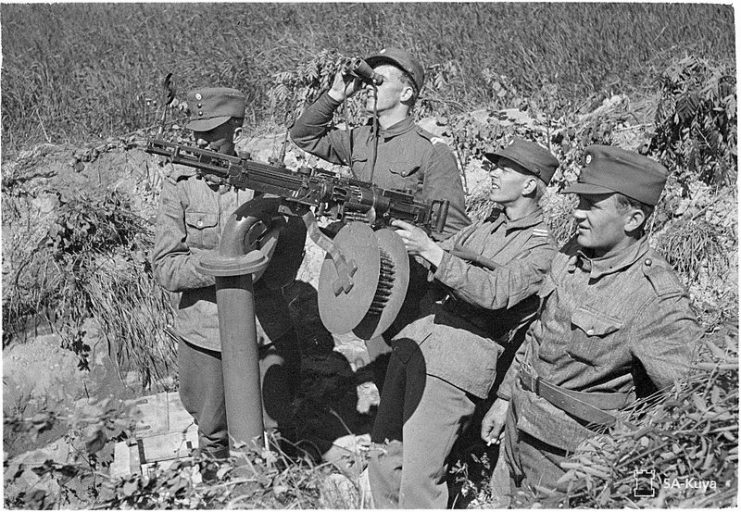
When the MG 42 made its debut in the war, Allied soldiers were quick to familiarize themselves with the distinctive sound of the machine gun. They coined the name “Hitler’s Buzzsaw” as a sobriquet for this impressive enemy weapon.
The MG 42 was extremely effective at providing suppressing fire, and it easily forced enemy troops to dive for cover each time it was fired.
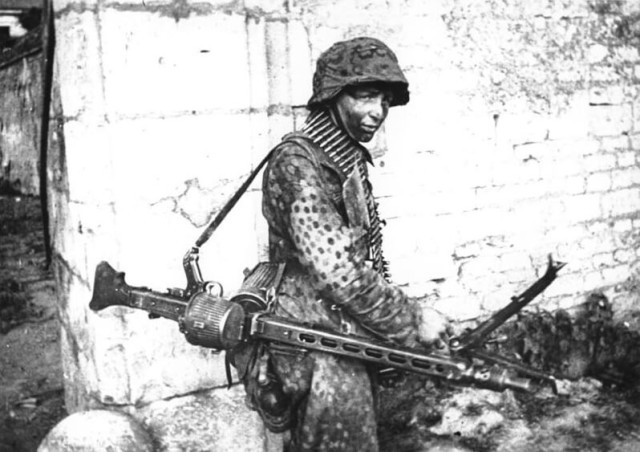
As a general purpose machine gun, it played both a light machine gun support role and a medium machine gun support role. Its light weight and ease of set up was an invaluable attribute which made the MG 42 highly efficient in attack and defense positions.
However, the MG 42, despite its impressive features, did have its stumbling blocks.
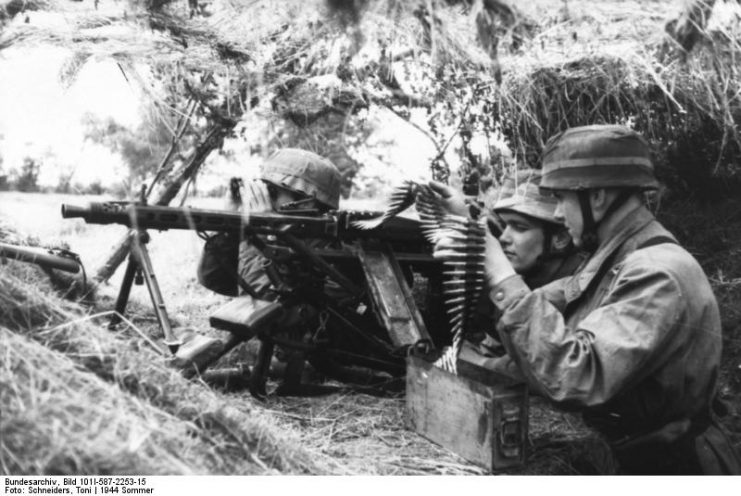
It was prone to overheating, which made the gun unsafe for rapid firing over long periods. After about 150 rounds, a machine gun crew member would have to open the side hatch to replace its overheated barrel.
Also, due to its high firing rate, ammunition was easily exhausted during sustained fire. Some felt it wasted bullets during sustained fire since targets always dove for cover at the sound of the machine gun.
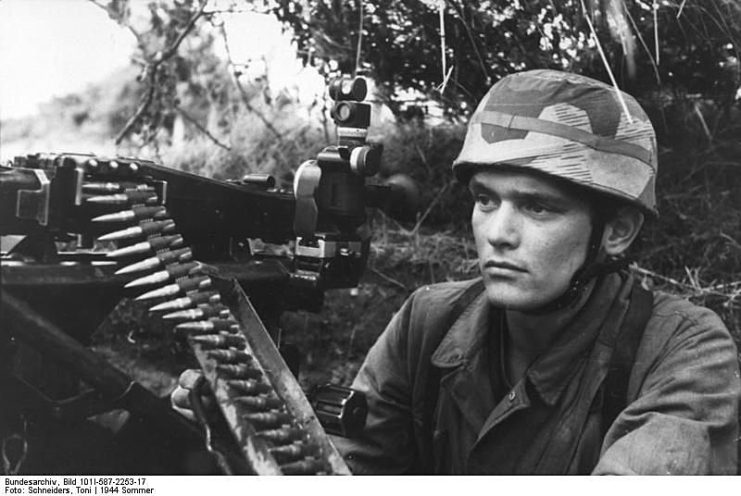
Owing to the disappointing results of sustained fire and the “intolerable” expenditure this method incurred, German military officials ruled that no more than 250 rounds should be fired per minute in a single burst. Furthermore, whenever sustained fire was inevitable, no more than 350 rounds per minute should be fired.
For both light and medium machine gun roles, its operators received extra training to enable them to fire more accurately in short bursts.
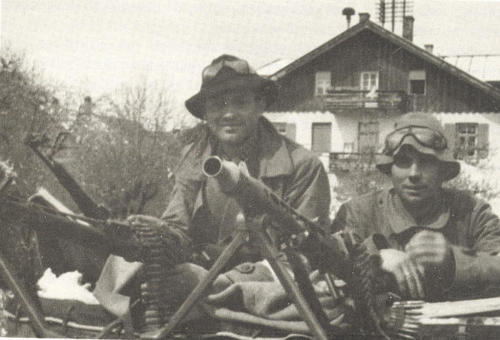
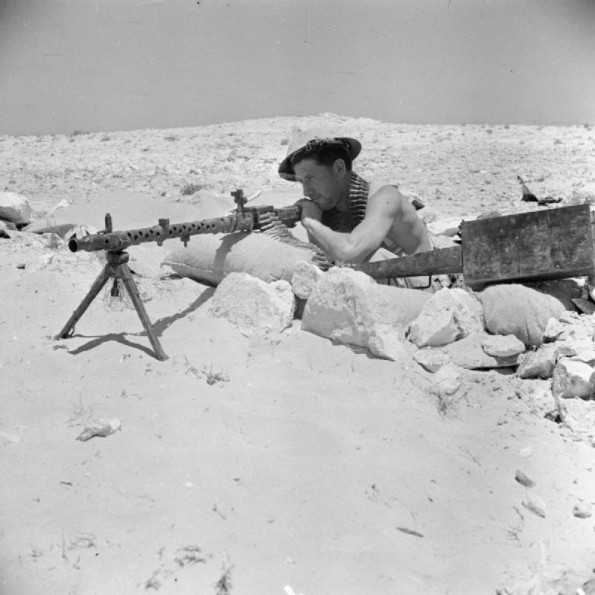
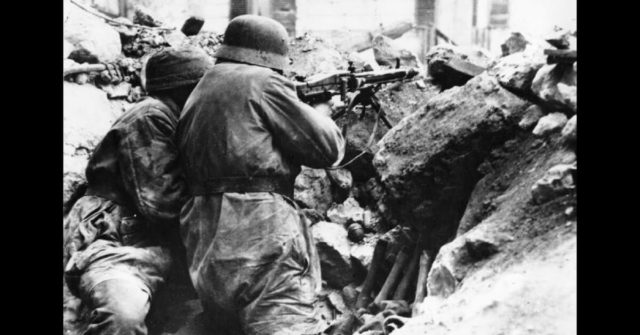
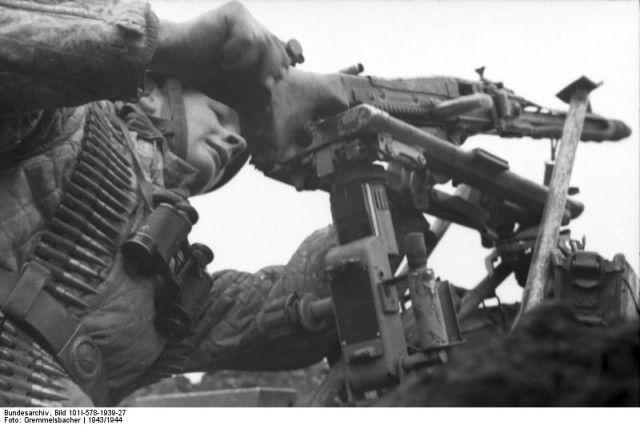
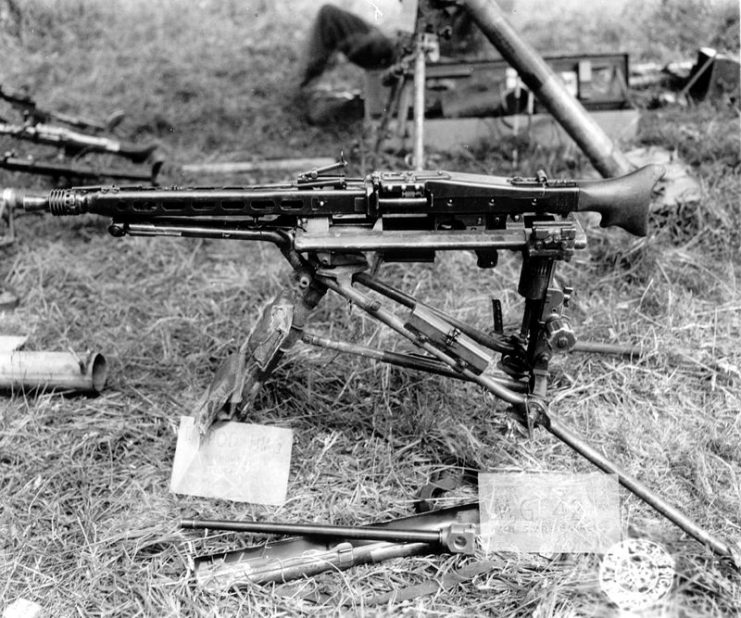
Read another story from us: Birth of the Assault Rifle – The Sturmgewehr 44
Variants of the MG 42 were produced by the Allies in a bid to replicate its performance both during and after the war. Such variants include the Finnish-made MG 42 alongside the MG 3, the MG 51, the M 53, the M 74, the SIG MG710, and the T24.
Although the war ultimately ended with Nazi Germany’s face in the dirt, a few weapons emerged as proof of the country’s outstanding ingenuity in weapons production. Needless to say, the MG 42 was one of them.
